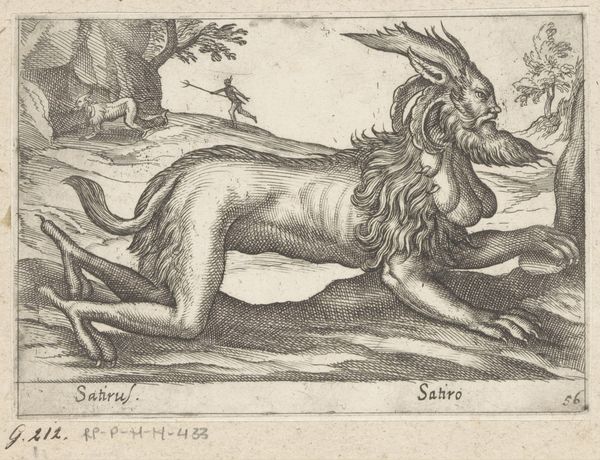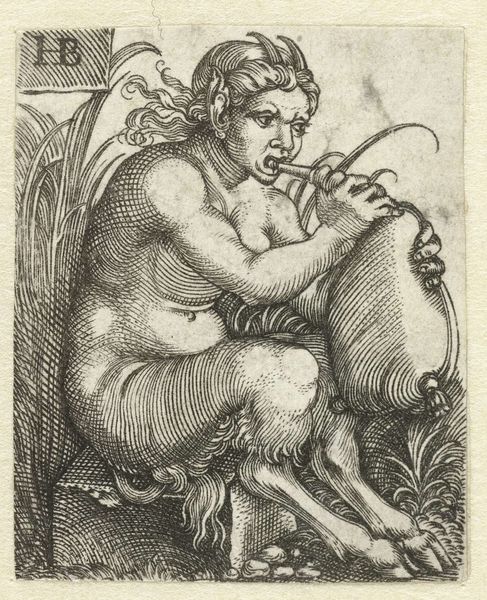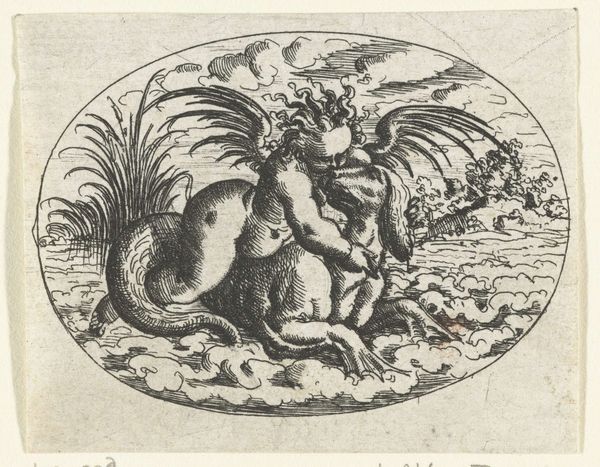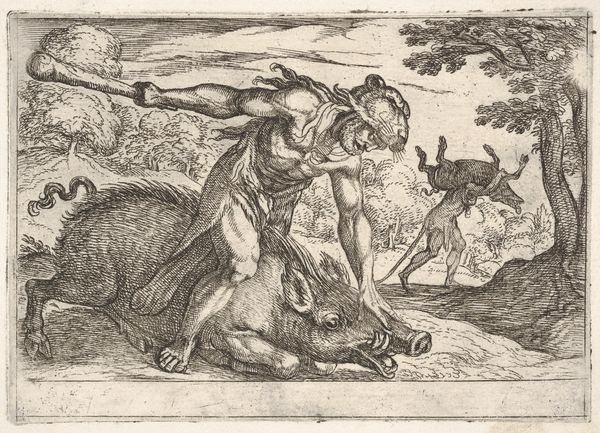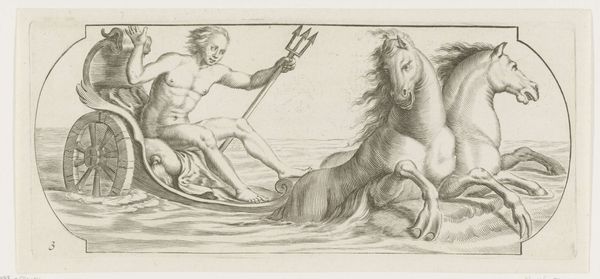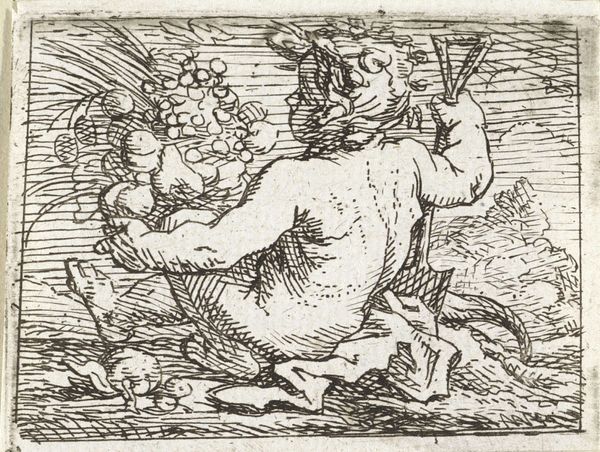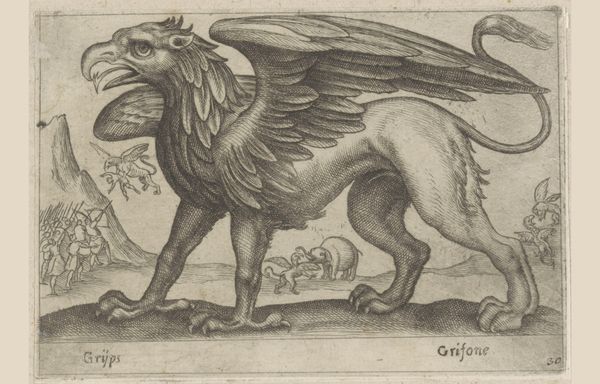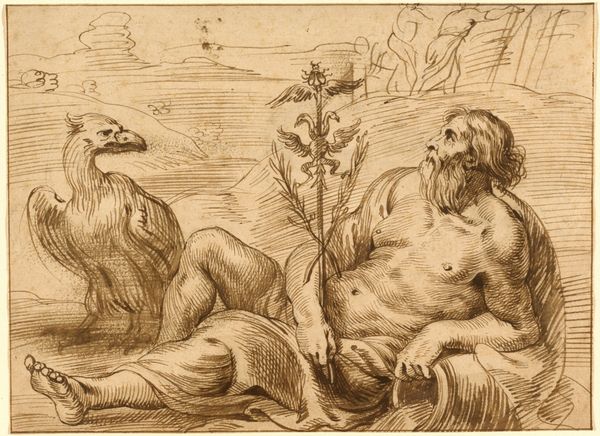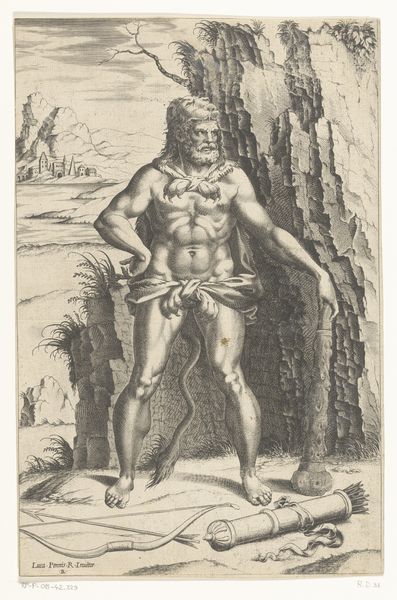
print, engraving
#
allegory
#
baroque
# print
#
figuration
#
line
#
history-painting
#
italian-renaissance
#
engraving
Dimensions: height 95 mm, width 137 mm
Copyright: Rijks Museum: Open Domain
This is Antonio Tempesta’s "Sater," made in the late 16th or early 17th century, through the technique of engraving. Look closely, and you'll notice the intricate network of lines that bring this mythological creature to life. The density and direction of these lines create areas of shading and highlight, defining the form and texture of the satyr’s body, from its coarse hair to muscular limbs. Engraving is an intensive method that requires considerable skill and precision. The artist uses a tool called a burin to manually carve lines into a metal plate, which is then inked and printed. This labor-intensive process meant that prints were relatively expensive. Prints like this one circulated widely, playing a crucial role in disseminating knowledge of classical mythology and artistic styles across Europe. Tempesta's "Sater" speaks to the growing market for art and visual culture, and the skilled labor that underpinned it. Ultimately, understanding the work involved in the production of prints like this, allows us to appreciate the cultural and economic context in which they were created.
Comments
No comments
Be the first to comment and join the conversation on the ultimate creative platform.
